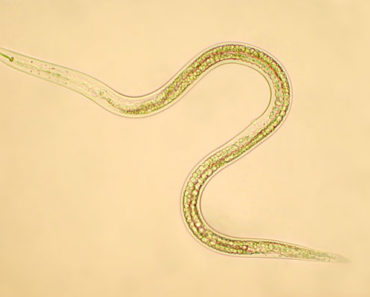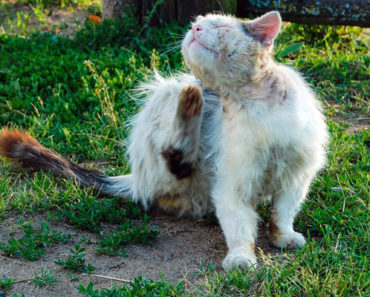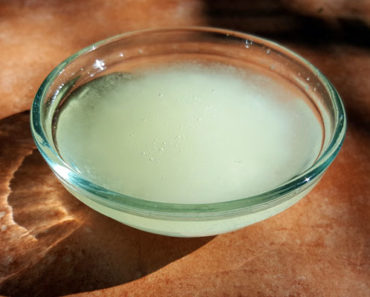We all love our pets but they can suffer from fleas. While fleas don’t normally bother most people, they can still leave itchy red welts on the skin, and generally be annoying in the home. Most of us want our dogs and cats to be healthy and flea-free.
Unfortunately, the flea killers and repellents available in the stores can be highly toxic to pets. Even the brands that are sold from vets can be too. Searching for information online can lead you to cases where pets have died after being treated with common flea meds.
Common flea medications have also be so overused that they do not work in many parts of the world. This leaves pet owners trying to find better solutions to manage an annoying flea problem inside or outside the home.
Everyone wants the best for their pets, but they also want pets to not constantly scratch from fleas. Yet it may not always be possible to keep your pets inside all day long. Plus, dogs need to be exercised. Fleas can even travel inside on your shoes.
You don’t want to put anything on your pets that is going to be toxic or cause disease in pets or family. The best solution is to turn to natural flea killers and repellents. Not only are these effective, but they are also 100% safe to use on your dogs or cats.
Coconut oil can be used alone, or as a base for a natural flea repellent and flea killer. It’s also extremely affordable. One container can be used for multiple purposes around the home, including on your pets.
Does Coconut Oil Really Kill Fleas?
Many people may be surprised at this simple solution. Coconut oil really does work at killing fleas.
This is because coconut oil contains a compound called lauric acid. Lauric acid is a fatty acid, lipid, and saturated fat, and it makes up about 50% of the fatty acids within the coconut oil. There have been many health benefits for humans and cats, but lauric acid works as a natural flea killer too.
Fleas avoid anything that contains lauric acid as they have that built-in natural danger detector that tells them to stay away.
Lauric acid is used in the medical and healthcare industries to kill bacterial, fungal, and viral infections. It’s also used as one of the fatty acids to make soaps and shampoos, rather than animal-based fats.
People will also appreciate that coconut oil has a mild, pleasant smell. It’s also great if you have allergies and can’t tolerate stinky flea sprays.
How Does Coconut Oil Repel Fleas?
Coconut oil can be used through two different methods to kill fleas.
- Rub it directly into your pet’s fur or hair.
- Give it to your pet orally.
Fleas naturally know they do not want to be near anything containing lauric acid. They will stay away. If they do land on the oil, it will work one of two ways. The acid will kill them. And it will hold them in place so they can’t move. The oil will get into their system, and break down their bodies.
So if the coconut oil doesn’t work one way, it will with one of the other ways.
It’s like having double flea protection for your loving pet. Soon your pet will be flea free!
Is Coconut Oil Safe for Dogs and Cats?
While coconut oil harms minute insects, such as fleas, it’s perfectly safe for dogs or cats of any size. And unlike store-bought flea meds, if your baby or young children pet your dog or cat, they will still stay safe, as coconut oil is still safe for them too.
If you have a dog or cat who has a chronic disease, you may have been hesitant in treating them with flea meds. But coconut oil is safe to use on pets who have diseases or other conditions.
You can use coconut oil on every age of dog or cat, from kitten and puppy years, and up into their senior years.
If your pet has allergies, coconut oil is fairly low on the allergen scale, so you can give it safely to your pets who have allergies to different products.
There are also no worries about how much flea treatment to give your pet. If you overdo it on the coconut oil, the worst to happen is your pet gets a bit greasy! This can be wiped off with a cloth.
It’s also unlikely that fleas will even develop a resistance to coconut oil, as it’s not been used billions of times for the past century.
If you forget when you’ve given your pet a flea treatment, you can safely treat them multiple times with coconut oil too.
Another consideration is that even if your pet licks the coconut oil, it’s still 100% safe for them.
There are also no drug or food interactions when using coconut oil for flea prevention.
Best Way to Use Coconut Oil on Dogs or Cats
You can use coconut oil three different ways.
- Treat fleas that are already present on your pet.
- Use it as a flea-repellent, even if your pet has no fleas.
- As an ingredient in a flea-repellent treatment.
If you do put it in their food, use only a small amount, such as half the size of a pea. The smell can be quite strong to a pet and many animals may not like the taste. But this works well for the fighting of fleas, as they don’t like it either.
To use it on your pet’s skin or fur, you can simply rub it in. Do the following steps outside, because as you apply the coconut oil, the fleas may jump off. You want to do this outside so they don’t run around your house.
For pets who already have fleas in their fur or hair, begin by coating your hands with coconut oil. Coconut oil is naturally at solid state at natural room temperature. As you rub it through your hands it will warm up and liquify.
For the next step, you will rub it throughout your pet’s coat. You can start with one section and work your way over their body.
Be sure to rub it into back, sides, and belly of your pet. Work your way around the neck region — especially the top of the back where fleas hang out — and up the head. Do their legs, and tail.
The good news is that even if the fleas land on your pet and try to move around, the lauric acid in the oil will work its magic.
But you are not done yet. Once you have covered your pet’s coat, use a flea comb and run it through their fur. This will remove any fleas that are present.
Because the fleas will cling to the oil, they can’t get away. Drop your comb into a glass of water. The water is the final step in killing fleas that you have removed with the comb.
How Often Should I Treat My Pet?
Do your flea treatments once a week, from start of spring to start of fall.
If you have an indoors-only pet, and haven’t seen any fleas for two months, you can do your treatments only once a season to remove any stray fleas.
Simple Recipe for Coconut Flea Repellent for Pets
If you find it time consuming to rub coconut oil on your pets at least once per week, you can also try a special flea-repelling recipe. It’s simple to make and can be sprayed onto your pets much more quickly.
The addition of the lavender is safe to use on your pets, and masks some of that coconut smell if you don’t like it. It also provides additional flea repelling properties.
Flea Repellent Ingredients List
Gather together the following ingredients to make your flea killer and repellent recipe.
- One plastic spray bottle that you can get in the travel section of dollar stores.
- 25 ml of coconut oil, organic is best.
- 25 ml hot water.
- 5 drops of lavender essential oil from a good brand.
- Stainless steel spoon and saucepan.
Method to Make Simple Flea Repellent
Since coconut oil is naturally solid in its natural state, you need to heat it up in order to use it as a flea spray.
- Heat up the coconut oil in a clean saucepan on your stove.
- Do not let it boil.
- Stir the oil until it has thoroughly melted.
- Add in water and mix. This will heat up the water.
- Pour in 4 drops of lavender essential oil. This is safe for dogs or cats.
- Turn off the heat.
- Mix all ingredients thoroughly together.
- Carefully pour the mixture into the spray bottle.
- Do this over the sink to avoid mess.
- Twist on the spray nozzle.
- Spray a few times on your wrist to ensure it’s not too hot for pets.
- Spray onto your pets.
- Rub mixture over your pets.
- Use a comb to distribute the mixture and remove any stray fleas.
- If there is still mixture left in the bottle, pour it out into a small tin pan. You can save it for the next day.
- Do not let the oil solidify in the bottle or you will have to buy a new one.
- You can then apply the coconut oil to your pets the same way that you would apply after melting it in your hands.
- Wash your bottle with dish soap and hot water, and spray it out several times to get out the coconut oil.
- Clean up.
- If you have discovered that you’ve made too much or too little, adjust the measurements accordingly for next time.
Additional Benefits for Coconut Oil on Pets
Besides working as an effective flea prevention, coconut oil also has other benefits on the skin.
- Works to soften dry skin.
- Can kill the fungus that causes itchy dandruff on your pet’s back.
- Can kill parasites on the skin.
- Kills bacterial infections.
- Use to clean their butts and prevent anal gland infections.
- Makes all pets in the family smell the same to prevent fights.
How To Choose The Best Coconut Oil?
The first and foremost thing that you need to keep in your mind is that the purchased oil is the correct type of coconut oil. You should check the label and the stickers in it to see whether it is unrefined, extra-virgin, organic coconut oil as these are the primary symbols of a pure and natural product.
3 Popular Coconut Oils for Fleas, According to Reviews and Ratings :
- Zesty Paws Coconut Oil for Dogs, Organic & Extra Virgin, Anti Itch & Hot Spot Treatment
- Sun Beams Brands Coconut Oil for Pets, Premium Quality, Organic & Raw Oil
- CocoTherapy Pure, USDA Certified Organic Virgin Coconut Oil for Pets
Safety Guide for Pet Owners
Follow these tips to keep your family safe.
- Do not use coconut oil on any other type of pet without researching first. Use only on dogs or cats.
- If you’re getting bitten in the home, feel free to rub coconut oil on your feet, ankles, and lower legs too.
- Do not put the coconut oil on your upholstery fabrics or the floor.
- You can rub coconut oil in your pet’s bed, or on your sheets or pillow, but note that it can leave a grease stain. These will wash out in hot water.
- Check the expiry date or shelf life of your coconut oil. Do not use past its date.
- Store your coconut oil in a dark cupboard away from moisture and heat.
- While too much coconut oil won’t harm your pet, it may be a bit difficult to remove. Start out with a small amount. It’s always easier to add more coconut oil than to remove it after it’s on the pet’s hair or fur.
Final Thoughts
If you’ve been struggling with your pet’s fleas over the past year, you’re not alone. Fleas are getting worse, as people and pets are living in more densely-populated regions of the city. Plus, fleas are developing a resistance to pesticides.
Many pet owners are skeptical that flea medications are safe. The best remedy is to use coconut oil on your pets. Not only is it safe for them, it’s safe to use around your family too. And if you’ve been trying to keep your cats or dogs from licking flea meds off, you won’t have to worry about doing that with coconut oil.
The next time you see your pets scratching or licking their fur, chances are they have fleas. Begin the coconut oil treatments immediately. Soon you and your pets will feel more comfortable around a flea-free home.











We did the coconut oil spray and it attracted the fleas more than it killed them. We have them so bad now that I sprayed them with that. Please don’t do the coconut oil spray.
I also am also not convinced of the person who says it attracted the fleas I assume she either was badly infested and did not properly administrator the oil as well as rid them from all other living and non living things in the home. I recently brought my kitten to be fixed after finding him half dead outside having seizures 2days straight I figured he won’t make it so never bothered to get flea meds but he did and hasn’t had a flea ever in his life even being born and raised for 3 weeks or so outside in woods still not one UNTIL he snuck out front door when my husband opened and it was night and he is a black cat so didn’t see his escape we went bed assuming he was in kids room sleeping but when got up to feed him wasn’t there panicked went to front door where he was cowering in the flower bushes next to door and like everyone is saying flea season from hell cause all my neighbors have complained all season that animals were infested couldn’t kill them with any meds etc…so of course I nervously checked him thinking just my luck and didn’t see anything but did coconut oil treatment anyway AND PRESTO TWO LITTLE BUGGERS JUMPED TO THEIR DEATH IN LESS THAN 5 MINS thank God that was all he had and they never had chance to get in bedding etc. so just one use worked like charm vet neighbor gave him clean bill of flea health. So point is it does work to kill and repel them so I’m not sure maybe her cats fleas were special.
Thank you for your article.
Helped answer many questions I had on using the coconut oil, on my cats.
I am surprised to read an earlier comment, in which someone said that the coconut oil attracted fleas instead of killed them.
I have a 15 year old toy poodle named Harley, who is my heart, along with two other family dogs. In the 15 years I have had Harley, he has never had a flea, to my knowledge. Well, this summer should have been called “Attack of the Fleas” where I live! Not only did they systematically attack all of the cats and dogs in the vicinity, but regular (toxic) flea treatments didn’t seem to bother these fleas at all!
I couldn’t stand to put so many harsh chemicals on/in Harley, at such an old age, but I couldn’t stand to see him cry when the flea bites couldn’t be stopped.
Sooo…I found this article and it had to have been sent from above! I bought fractionated coconut oil (instead of the solid) and from the very first minute I slathered it on him, he hasn’t been bothered by another flea! NONE! I love that I don’t have to worry about putting it places he can lick, or too near his ears and eyes because it won’t hurt him!! Do your precious pets a favor and get them some coconut oil…the fleas are gonna hate you but your dog is gonna love ya!
I personally love coconut oil. It worked wonders on my 3 week old kitten. The fleas died on contact. The coconut oil smothers them. Organic coconut oil is the best to use. To save a little time just put the jar in warm water before using it and that seems to liquify it. Instead of having to rub it in your hands first.
I have tried the collar, the fabric spray and the powder. Now I have them on my pillows, sheets and they have driven me to panic mode,
I going to use the coconut oil now.
I am also going to rub a light coat on my bed.
Crossing my fingers. I just did not see where the dawn comes in. After I coat my dog, my hair and my bed I will be getting ready to take everything to the laundry mat and wash everything.
I have used the coconut oil. Rubbed it on and it is helping, slowly getting rid of fleas. Had to get the unscented oil cause a couple cats objected to the smell. I was using D. Earth but the dust bothered my breathing some. Still using it on carpet, furniture and their beds.
Can you make treat with coconut oil and it help with the fleas? I’m going to start using it on my pets today. I think I will do it in my bathtub that way I don’t have to take my cat outside he doesn’t like it outdoors.
I’ve been using good coconut oil for a couple of years for myself. This year has been The Fleas From Hell! So I put some oil in a cup when I found them on my beloved pets. They were so miserable I knew I had to find something to control the fleas. Anyway, when I started finding the fleas I would put them in the cup. They instantly stopped moving! After flea picking for awhile I knew there had to be a better way. Just to be safe I looked it up and found out about coconut oil usage in dogs/cats. It worked wonders as soon as I put it on them!!! I sure don’t understand the one comment saying it attracted fleas. That’s impossible as the lauric acid is deadly for them and the fleas know it! My guys have not scratched a single time nor have I seen anymore fleas since starting this regiment!!! LOVE IT!!!
Just one more thing. I had tried to use D. Earth but as soon as it touched my daughter’s skin, she had a severe reaction and it seemed to become embedded in her skin which became infected. Terrible! So, please be safe with whatever you decide to use in your home and on pets!
Make sure to use food grade diatomaceous earth
My cat, Buttons, thats 2 and a half years old never had a flea problem in her life. Right at this moment she is infested with them. I cried and cried and I looked on google for safe cheap ways to help her. Soon as I saw coconut oil I ran to the store got a very good organic usda brand and came right home and took my time and put it all over her. The fleas died right away!! I am so very happy I found this article. Thank you so very much. I am now very very happy. Its safe for her and my family. What a miracle and a huge blessing.
Here’s what I do BEFORE using ANY kind of treatment, that WILL work, like coconut oil and, optionally, combing with a good flea comb with metal tines. Toss everything, bedding, clean towels on the shelf, etc., into the dryer for 40 minutes to kill hidden and/or unseen fleas and eggs and the poo-poo then bag and tie off bags to protect items from the flea’s grubby little hands until finished; completely empty, wash with soap and warm water and dry the litter box and set to the side for a bit. Wait ten to fifteen minutes after disturbing carpet, bathroom floors, etc. before vacuuming thoroughly. Got to surprise the little suckers or they will hop off and evade capture. Smart, yes but definitely not invincible. Litter boxes, the eggs drop off our pets with movement and hatch out right in the box, even in clay litters. Once all rooms in the home have been vacuumed, *always start at the farthest area away from the doorway, backing out of the room, to ensure no hoppy monsters have a greater chance of invading*, apply coconut oil and fill litter box with fresh, egg- and flea-free litter. Once I learned, on my own, to completely change the litter every two weeks until the fleas were under control or eradicated, whichever came first, and to immediately dispose of the vacuum bag – or -spray any kind of soap into the cup of a bagless vacuum and wait an hour before rinsing clean the flea problem greatly decreased and no more being jumped by the little monsters. If kitty has sat in a cardboard box or in something, vacuum it out! Fleas are or will surely follow and wreak havoc if you don’t. Infestations do not have to exist and this has ALWAYS worked. Vacuuming the toys, scratchers, etc. also helps take down the numbers of the nasty little invaders.
The coconut oil worked in my dog though I shampoo him with Dawn dishwashing liquid twice a week too.
I made it into like a protection after giving him a long warn bath, allowing him to get soaked with the detergent to kill the fleas. I used a white face cloth to catch them while he’s covered with the lather.
I put down dog pads and flip them over so the slippery side was facing up. Than coated it with cocunut oil. And put where they lay or sit. This will get it on bottom of paws and belly when they lay down and you can see them stick to pad. Fleas are drawn to white so you will be able to see ones you captured. There was no fleas at all last year. So I was shocked to see my cat covered in them. Cocunut oil is best. Frontline does nothing but poison pet.
I recently rescued a feral kitten he was very ill with pink eye in an upper respiratory infection and of course covered in fleas took him to they gave him a treatment on the back of his neck which did absolutely nothing I say HOORAY for coconut oil. It is a natural wonder not only for pets but for people I use it on my scanning in my hair and now on my kitty I apply it after a shower and my kitty licks it off of me I also put it on my hands and rub it through my little buddies fur doesn’t bother him a bit I think he kind of likes it.